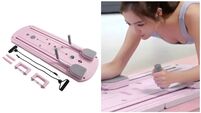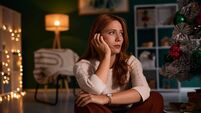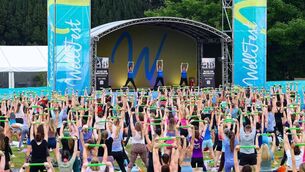2020 vision: How to protect your eyes while working from home

It's not just a Covid pandemic we're facing, with one million people around the world becoming shortsighted every week. Photo: iStock
Working from home has taken a toll on many of us, with a growing number of people now adding eye problems to their long list of troubles.
In Britain, the College of Optometrists found that 22% of people reported that their vision was impacted during lockdown. Cork-based optician Seamus Flynn says that the trend is similar here in Ireland, with patients complaining of eye strain, tiredness, and headaches. Our use of screens is also causing a huge increase in myopia, or short-sightedness, especially among children.
"Using these devices for extended periods of time causes a strain on the visual system. The eyes and associated muscles get used to focusing at a close distance, and while everything appears clear at this distance, the long-distance vision can deteriorate. The longer the length of time doing close, concentrated work, the more of a problem this becomes, especially for children."
On top of all of this, we’re also having trouble sleeping. The blue light that is emitted from our screens can be blamed for this, says Flynn.
His company, Sapphire Eyewear, which specialises in blue light glasses, has seen a significant increase in sales since March, with many customers citing lack of sleep and eye strain as huge problems during lockdown.
If any of this sounds familiar, you’re not alone, and there are steps you can take to help ease eye strain.
Experts are divided on their opinions of whether blue light lenses actually work, with The American Academy of Ophthalmology and the Association of Optometrists in Britain still out on their verdicts. However, Flynn says the lenses are highly effective.
“People have found a big difference after trying them,” he says. “The main thing is a reduction in eye strain, headaches, and tired eyes. But people also find they help them sleep better. Blue light affects melatonin production, so if people are working late or bringing phones to bed, their sleep can be disrupted.”
The idea is that these special lenses will block out blue light when you wear them, allowing you to sleep better.
The Mayo Clinic recommends trying the 20-20-20 rule if your eyes feel strained. Basically, every 20 minutes look at something 20 feet away for at least 20 seconds.
Flynn says that getting outside regularly and focusing on distant objects is really important for fighting short-sightedness, even just during your ten-minute break.
This is especially important for children. Make sure they get outside away from a screen or book for at least 11 hours a week.
According to Specsavers, eye strain can also be caused by excessive sunlight. While this doesn’t really apply to us this time of year, a bright room can be just as demanding on your eye muscles.
Use curtains or blinds to reduce outside brightness and avoid sitting under large fluorescent lights. Opt to use lamps instead.
Try to position your light source in front of you when reading at a desk and behind you if reading from a page away from a desk. If watching television, do so in a warmly lit room.
It’s also advised to avoid placing your monitor directly in front of a bright window or white wall.
A humidifier might help those suffering from dry eyes, especially those who smoke.
Avoid positioning your desk near a heater that may blow air into your face. If you're really struggling with dry eyes, ask your pharmacist about eye drops.
Reflections on your screen can also be a source of blame for eye strain. Try attaching an anti-glare screen to your monitor, closing the curtains if reflections are a problem or repositioning your desk.
Those who wear glasses can also talk to their optician about investing in anti-glare lenses if they find this to be especially troublesome.
Make sure your device’s brightness is at the same level as your surroundings. Most phones and some laptops will do this automatically, but you can change it manually in your settings.
You can also enlarge text size, edit contrast, and change the colour temperature to reduce the amount of blue light on your screen to less straining hues like orange and red.
Experts recommend placing your computer directly in front of you, at about an arm's length away, with your screen tiled at a 10 to 20-degree angle at eye level.
Keep documents placed close to the screen to avoid needing to refocus when moving between the two. Get a good, adjustable, chair, and try a laptop stand to raise your laptop screen at your desk.
When it comes to phones and tablets, experts recommend holding the device on your lap with arms at 90 degrees, as if you're reading a book.
Of course, if you’re really struggling, contact your local optician and make sure to tell them if you spend a lot of time on screens when you go in for your eye test.

Celebrating 25 years of health and wellbeing









